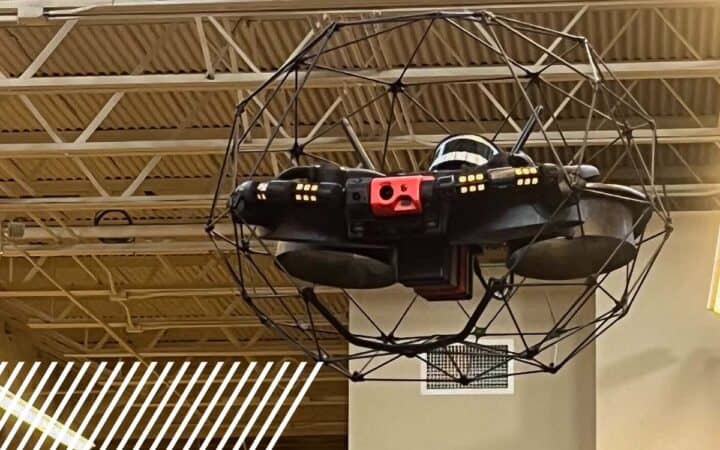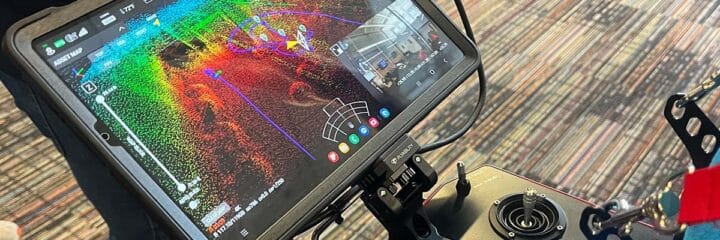
Exploring the Role of Confined Space Drones for Reality Data Capture
Navigating confined spaces for data capture presents unique challenges that traditional inspection tools often cannot overcome. Confined space drones, specifically designed to operate in restricted and hazardous environments, have emerged as groundbreaking solutions. Their collision-tolerant design, coupled with advanced imaging technology, allows them to gather precise, high-resolution data in spaces that are too dangerous or inaccessible for humans. From inspecting industrial facilities to exploring hazardous sites, confined space drones are transforming confined space operations by enhancing safety, reducing costs, and delivering unparalleled efficiency.
What is a Confined Space Drone?
A confined space drone is a collision-tolerant UAV designed specifically for confined space inspections. Unlike conventional drones, confined space drones feature a protective cage that allows them to bounce off obstacles and continue flying without compromising performance or data quality. This unique design, developed by Flyability, enables them to navigate narrow passageways, tight corners, and cluttered environments with ease.
Equipped with high-definition cameras, thermal imaging capabilities, and powerful LED lighting, confined space drones can capture intricate details in spaces where human access is limited or unsafe. Industries such as oil and gas, power generation, mining, and infrastructure maintenance are increasingly adopting these drones for safer, faster, and more efficient inspections.
Why Confined Spaces Pose Unique Challenges
Confined spaces are defined as areas not designed for continuous human occupancy and often have restricted access points, poor ventilation, and hazardous conditions. Examples include:
- Storage tanks
- Pipelines
- Boiler rooms
- Sewers
- Underground tunnels
Inspecting such environments has traditionally required significant resources, including scaffolding, safety harnesses, and specialized equipment. These inspections not only come with high costs but also pose considerable risks to human inspectors, including exposure to toxic gases, unstable structures, and poor visibility.
Confined space drones address these challenges head-on by removing the need for human entry into hazardous spaces. They can fly into these environments, capture data in real-time, and return safely—all while keeping human inspectors out of harm’s way.
Key Advantages of Using Confined Space Drones
1. Enhanced Safety
The foremost benefit of confined space drones is their ability to perform inspections in hazardous areas without risking human lives. Inspectors can operate the drone from a safe distance, reducing exposure to toxic gases, falling debris, or structural collapses.
2. Cost Efficiency
Traditional confined space inspections often require significant preparatory work, such as scaffolding, ventilation systems, and specialized safety equipment. Confined space drones eliminate many of these costs by streamlining the inspection process and reducing the need for extensive setup.
3. Speed and Efficiency
Confined space drones can complete inspections in a fraction of the time required by traditional methods. Their agility allows them to navigate obstacles quickly, and the real-time video feed enables immediate analysis of captured data.
4. High-Quality Data Capture
With advanced cameras, thermal sensors, and LED lighting, confined space drones deliver crystal-clear imagery and precise thermal data. Inspectors can identify cracks, corrosion, leaks, and other defects with unparalleled clarity.
5. Reduced Downtime
In industries like manufacturing and power generation, every minute of downtime results in financial losses. Confined space drones can inspect operational environments without requiring complete shutdowns, minimizing disruption to business activities.

Applications of Confined Space Drones in Reality Data Capture
1. Industrial Inspections
In industries such as oil and gas, confined spaces like storage tanks and pressure vessels require regular inspections to ensure safety and compliance. Confined space drones provide a non-intrusive way to capture critical data without draining resources.
2. Mining Operations
Underground mines are notoriously hazardous environments. Confined space drones can navigate narrow shafts, inspect ventilation systems, and assess structural integrity without putting miners at risk.
3. Infrastructure Assessments
Inspecting bridges, tunnels, and culverts often involves confined spaces and restricted access. Confined space drones simplify the inspection process by delivering detailed visual and thermal data from hard-to-reach areas.
4. Energy Sector
Power plants, including nuclear and thermal facilities, have confined spaces that require regular monitoring. Confined space drones help identify equipment malfunctions, leaks, or signs of wear and tear in restricted zones.
Real-World Success Stories with Confined Space Drones
Countless case studies back the success of caged drones in reality data capture. For example:
- 72” Culvert Inspection: In a critical infrastructure project, a caged drone was deployed to inspect a 72-inch culvert. The goal was to identify breaches in the piping, which could lead to water infiltration, erosion, or structural failure. The drone successfully navigated the length of the culvert, capturing high-resolution images and thermal data. Inspectors were able to pinpoint small cracks and areas of concern without requiring costly and hazardous manual entry. This inspection not only saved time and resources but also provided actionable insights for preventive maintenance and repairs.
- Tank Roof Framing Inspection: In an inspection scenario involving a tank holding a powdered substance, a confined space drone was deployed to visually inspect the roof framing. Traditionally, this inspection would have required human entry into a tight and hazardous space, posing significant safety risks due to airborne particles and limited ventilation. The drone successfully captured detailed imagery of the framing structure, allowing inspectors to assess structural integrity without endangering personnel. This approach saved time, reduced risk, and provided accurate, actionable data for maintenance planning.
- Collapsed Railroad Inspection: Following the partial collapse of a railroad structure, a caged drone was deployed to assess the damage and identify structural weaknesses. The drone navigated through the unstable debris, capturing high-resolution images and thermal data of the damaged supports and surrounding infrastructure. This approach allowed engineers to evaluate the extent of the damage safely and efficiently without placing inspectors at risk of injury from unstable ground or falling debris. The data collected played a crucial role in formulating a repair strategy and ensuring structural safety before reconstruction efforts began.
These examples highlight the versatility and reliability of caged drones in the most challenging scenarios.

Paving the Way for the Future of Confined Space Inspections
New technological advancements are opening doors for even more sophisticated uses of confined space drones. With the integration of AI and machine learning, these drones are expected to handle increasingly complex tasks, autonomously navigate intricate environments, and analyze vast amounts of data in real time.
The confined space drone represents a game-changing advancement in reality data capture for tight spaces. By combining innovative engineering with cutting-edge data capture technology, these drones are transforming the way industries approach inspections, maintenance, and operational safety.
If you have a confined space that needs inspection, contact FlyGuys today!